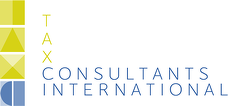A contractor can take the following measures to limit the risk of the liability for payroll taxes due by a subcontractor:
Direct deposit with the tax authorities to avoid the Chain Liability is generally not possible (albeit this can be negotiable with the tax office under specific circumstances).
The declaration tax payment behaviour for the Chain liability and the Hirer’s liability
At the request of the subcontractor, the tax authorities can issue a written declaration (in Dutch 'Verklaring betalingsgedrag') confirming that the subcontractor has paid its payroll taxes owed up to the date of the declaration (statement of payment behaviour for chain and hirer's liability).
This declaration does not provide for protection against the Chain Liability as such, but it does give the contractor insight in the tax payment behaviour of the subcontractor and thus a better picture of the effective (chain) liability risk.
The Dutch tax authorities can issue two types of payment behaviour declarations: the so-called 'clean declaration' or a 'conditional declaration'.
The subcontractor can only receive a clean declaration if the reported and/or assessed payroll tax has indeed been paid or if sufficient security has been provided for the payment thereof.
The subcontractor can receive a 'conditional declaration' if not all amounts owed in payroll tax have been paid because a payment arrangement has been made due to temporary liquidity problems and that arrangement has also been complied with, or if extension for payment has been granted for objection or (higher) appeal.
A new subcontractor who has not yet had to pay payroll tax and VAT cannot obtain a payment behaviour declaration.
If the business of a subcontractor is continued by a trustee or administrator, in principle no payment behaviour statement can no longer be obtained unless this continuation lasts longer and the trustee or administrator has shown good payment behaviour.
The subcontractor can request a written declaration of his tax payment behaviour from its tax office. The issuance of the declaration should under normal circumstances take approximately one to two weeks after receiving the request.
Good administration; avoidance of the rate for anonymous employees
The payroll tax liability of the subcontractor on account of employees working on a subcontracting project is usually determined based on the subcontractor's administration and, if necessary, the contractor's administration.
If there is no proper administration as a result of which the tax authorities cannot determine the exact wage amount, the tax authorities can make a reasonable estimate of the wage amount and the payroll taxes due.
The lack of a proper administration of the subcontractor may be a reason to determine wage tax and national insurance contributions with application of the so-called anonymous rate, which is basically the highest rate for payroll taxes applied (49.50% in 2020).
The anonymous rate must be applied, for example, if:
- the details of the employee (s) are not fully included in the payroll administration of the subcontractor, or
- the identity of the employee (s) has not been properly established, or
- there are no documents (work permits) proving that employees care actually allow to work in the Netherlands.
The subcontractor can request that the tax debt be reduced based on the anonymous rate, with the submission of data that the tax authorities can use to determine the wage of the employee and which can be used to prove the identity of the employee.
The identity of the employee can be proven with the following data:
- name, address and city details
- the date of birth
- the Dutch tax registration number (BSN)
- a specification of the hours worked
- the nationality
- the type of identity document (usually passport), the number and the period of validity
- if applicable: the presence and unique characteristics of an A1 statement, residence permit, work permit or notification
- name, address and place of residence of the subcontractor and the registration number of the subcontractor at the Chamber of Commerce.
Pursuant to the General Data Protection Regulation, the subcontractor may not request a copy of the proof of identity for this purpose; it is sufficient to view the proof of identity and to write down the relevant data from it.
A driver's license cannot be used for this identification, because the nationality of the employee is not stated on it. Based on other legislation (for example the Aliens Employment Act or the Wage Tax Act 1964) it may be required to request and keep a copy of the proof of identity (usually the passport).
The data must be recorded. For this, the contractor can use an overview of employees provided by the subcontractor, supplemented with their Dutch tax registration number (BSN). This recording must take place or have taken place at the time the employee started to work.
The contractor's administration must also include an adequate procedure for:
- identification of employees seconded by the subcontractor
- verification of proof of identity
- recording of personal data.
The recording of personal data must be preceded by the identification of the person and the verification of the identity document. This can be done by checking the original proof of identity for validity and authenticity. Among other things, the Guidelines for identification and verification of the Dutch Data Protection Authority provide guidelines for this verification. After this check, the personal data must be recorded and made inaccessible to unauthorized persons.
Appeal to the disculpation provision
In certain situations, the Chain Liability does not apply because no one can be blamed for the wage tax not being paid by the subcontractor. For example, as a result of a sudden deteriorating economic situation.
The contractor can then rely on the so-called 'general disculpation provision'. Appealing to this disculpation provision can only be successful if, in addition to the contractor, the subcontractor cannot be blamed (‘force majeur’). Whether this is the case must be assessed based on the facts and circumstances of the case.


.png)




